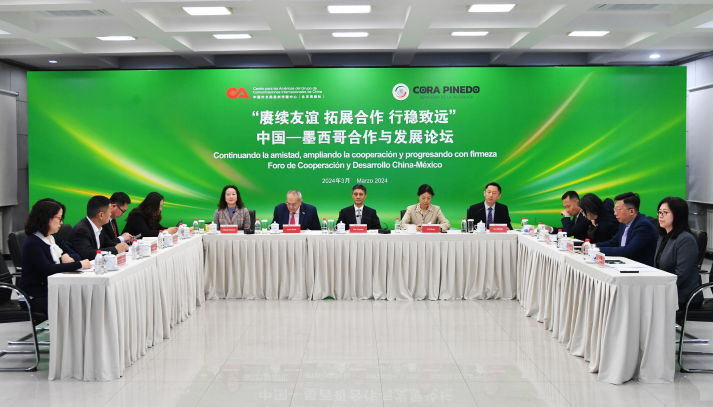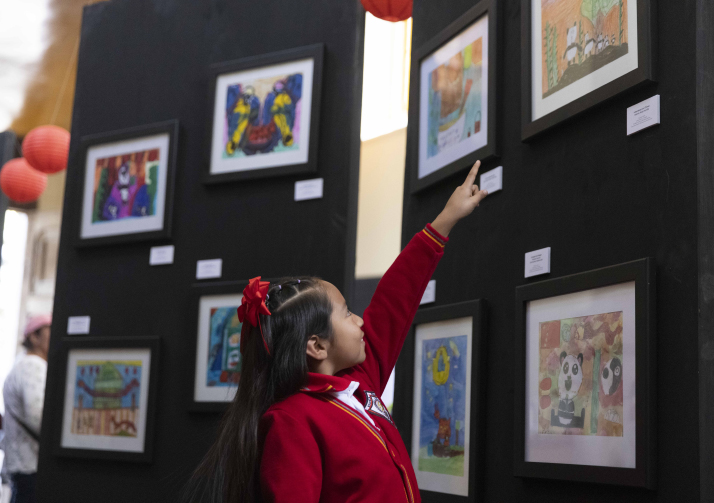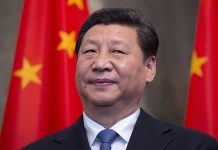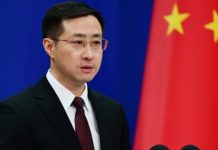
Along with merchandise and metals, ideas, tastes, words and customs were also shared. This long history of relations also stands as an important chapter in the friendship between China and Latin American and Caribbean (LAC) countries.
In the 52 years since China and Mexico established diplomatic ties in 1972, the friendship between the two countries has advanced despite facing challenges, Gao Anming, Vice President and Editor in Chief of China International Communications Group (CICG), said at the 2024 China-Mexico Cooperation and Development Forum, adding that complementary aspects of bilateral relations have been highlighted and importance has been attached to the common interests of the two countries.
The forum was held both on site and online on March 12, jointly hosted by the CICG Center for the Americas (CICG Americas) and the Senate of Mexico under the theme Continuing Friendship, Expanding Cooperation and Making Steady Progress. Officials and experts from the two countries shared their insights on the flourishing bilateral ties.
Boosting cooperation
Bilateral trade volume between China and Mexico has increased by more than 7,000 times since the establishment of diplomatic relations and cooperation in fields including railways, automobiles and new energy is close. According to Chinese statistics, the bilateral trade volume in 2023 was $100.23 billion, up 6.03 percent year on year.
Mexico’s relations with China have experienced significant progress in recent years. Mexico has recognized the importance of China as a strategic partner in areas such as trade, investment and technological cooperation, said Cora Cecilia Pinedo Alonso, President of the Asia-Pacific-Africa Foreign Relations Commission of the Senate of Mexico.
China places a high value on its relations with Mexico, and is willing to work with Mexico to strengthen strategic coordination, explore the potential for cooperation, make use of complementary advantages, and jointly promote the high-quality development of bilateral relations, Zhang Run, Chinese ambassador to Mexico, said at the forum.
The two countries should now look toward more diversified collaboration, Eduardo Roldán, former Consul General of Mexico in China’s Hong Kong Special Administrative Region, said. They should prioritize areas of great potential, such as tourism and high value-added industries, further synergize development strategies and make better arrangements for mutually beneficial cooperation, he added.
In his speech, Gao said China shares a similar philosophy of governance with Mexico, also an important emerging market, and the two sides should work closely for joint advancement in that area.
“We must continue to advance the cooperation that already exists in different areas, and we cannot ignore the need to chart the path to follow, so that our complementarities translate into effective links in priority areas of development, which allows us to deepen the friendship that characterizes Mexico-China relations,” said Jesús Seade, Mexican Ambassador to China.

Last November, Chinese President Xi Jinping and his Mexican counterpart Andrés Manuel López Obrador held their first face-to-face meeting in San Francisco, the United States, on the sidelines of the Asia-Pacific Economic Cooperation (APEC) Economic Leaders’ Meeting. The two leaders have set a clear course for the development of bilateral relations, calling for expanding China-Mexico cooperation in finance, electric vehicles and other emerging industries.
The number of Chinese enterprises operating in Mexico has doubled in recent years, Zhang said, adding that China’s technologies, products and experiences in the solar power, wind energy and electric car sectors are making increasing contributions to Mexico’s green and low-carbon development.
Significant progress has also been made in traditional areas such as infrastructure construction, he said, taking Mexico City’s revamped Metro Line 1 as an example. China Railway Rolling Stock Corp. Ltd. (CRRC), the largest producer of railcars in the world, delivered the first of a total of 29 new CRRC metro trains to Mexico City on July 18, 2022. The first train was fully manufactured in China, while the other 28 trains will be manufactured 65 percent in China and 35 percent in a factory in Querétaro, a city in central Mexico.
In addition, several ministerial-level authorities and governors from China and Mexico made reciprocal visits last year, facilitating the implementation of numerous important projects, Zhang told the forum.
China’s southwestern municipality of Chongqing established friendly ties with the Mexican state of Nuevo León in 2013. Chongqing and the Autonomous University of Nuevo León signed an agreement last October to launch a Luban Workshop, part of a Chinese vocational workshop program that operates overseas, the first of its kind in LAC countries.
Chongqing is honored to be an active practitioner of friendly exchange between China and Mexico, Wang Wen, Director of the Foreign Affairs Office of the Chongqing Municipal People’s Government, told the forum.
China welcomes Mexico to share opportunities for prosperity and also hopes that Mexico will provide an open, inclusive, transparent and non-discriminatory business environment for Chinese companies, and facilitate more people-to-people exchange between the two countries, so that bilateral friendship can continue to flourish, Zhang said.
Promoting exchange
It is crucial for both countries to continue dialogue and seek ways to strengthen their relationship for mutual benefit and sustainable development. “By prioritizing shared development, we can create an enabling environment for economic and social growth, ensuring that benefits reach all people and communities, both now and in the future,” Pinedo Alonso added.
The China-Mexico Cooperation and Development Forum, in its third edition, has become an important platform for exchange. And it is necessary for the two developing countries to strengthen cooperation and exchange so they can face challenges together, Li Yafang, President of CICG Americas, told the forum.
“We have accomplished a lot, but there is still much more to do,” Yeidckol Polevnsky, President of the Mexico-China Friendship Group of the Mexican Chamber of Deputies, said. According to Polevnsky, China is “a rich source of culture, principles and values that not only need to be recognized, but also learned from.”
Seade suggested that the two countries should further strengthen cooperation in science and technology, education and research, and enhance exchange between students, scientists and scholars through jointly setting up funds in certain fields.
Media, think tanks and other research institutions should play a more active role in building platforms for exchange and communication, Li said, adding that people from a variety of sectors can participate in dialogue to increase mutual trust, dispel misgivings and find new common ground.
José Luis Jáuregui, an editor of the Mexican Reforma newspaper, said Mexican readers are increasingly interested in China-related information, and they want to learn more about China’s economy and trade, history and culture, and scientific and technological innovation.
According to Li, media from both sides should provide comprehensive and objective information related to experience gained in governance, economic and social development, education, tourism and cultural activities, and cooperation on jointly advancing the Belt and Road Initiative, which aims to boost connectivity along and beyond the ancient Silk Road routes.
Only by sharing more, can we have a better understanding of each other, she concluded. –The Daily Mail-Beijing Review news exchange item




